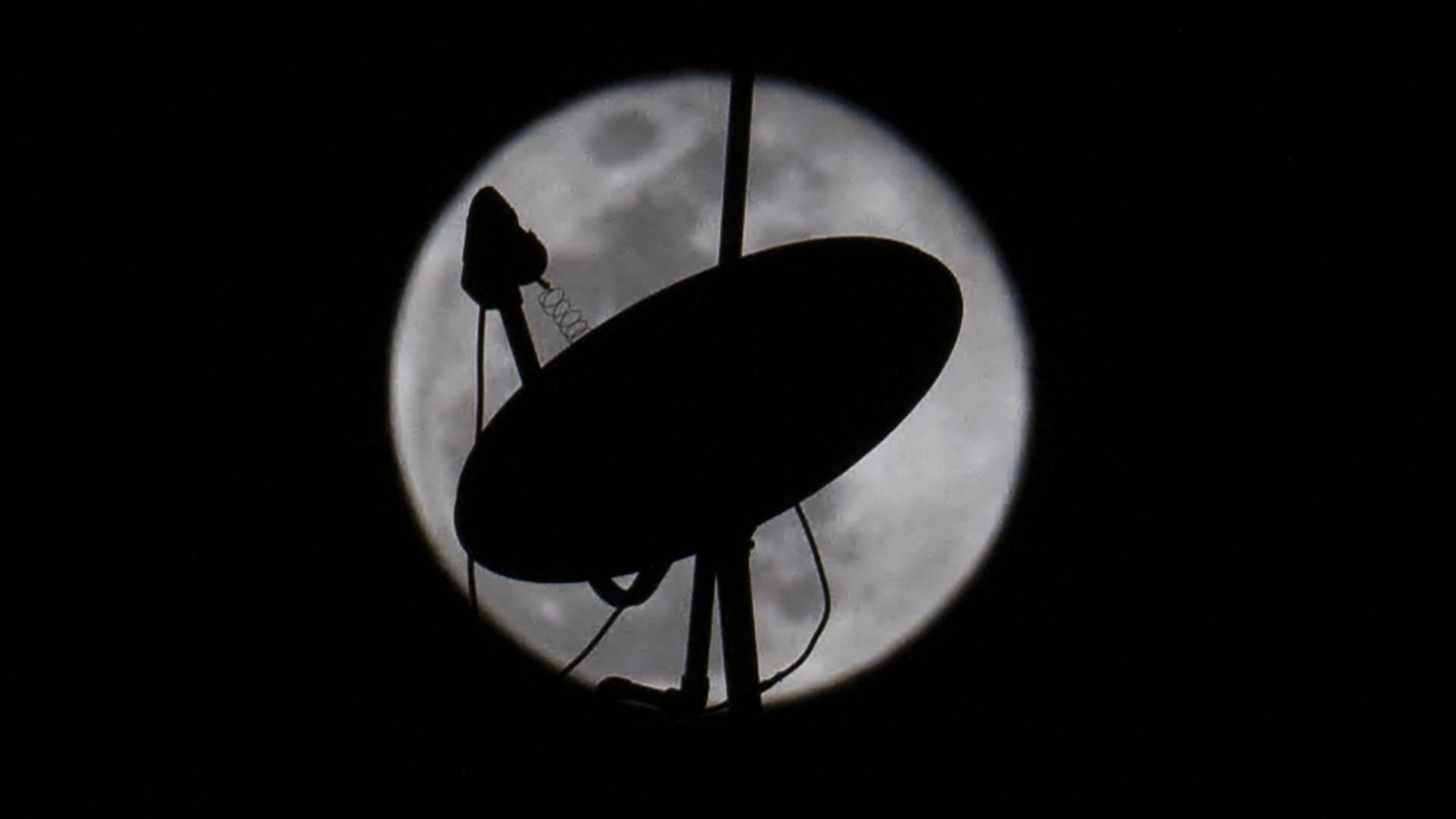
22 Feb What are space nukes raising tensions between Moscow and Washington?
In this pool photograph distributed by Russian state agency Sputnik, Russia’s President Vladimir Putin talks to students and Chelyabinsk Region industry workers at the Stankomash plant in Chelyabinsk on February 16, 2024.
Alexander Ryumin | Afp | Getty Images
A fresh spat between Washington and Moscow has raised alarm about the potential risk of a space-based nuclear satellite attack which could cause chaos to critical communications systems on Earth.
Russia denied U.S. claims that it was developing a space-based anti-satellite nuclear weapon, with President Vladimir Putin saying Tuesday that the Kremlin was “categorically against” the deployment of nuclear weapons in space, and accusing the White House of scaring lawmakers into passing a new aid package for Ukraine.
It comes after a Reuters report emerged earlier Tuesday, citing one source, that the U.S. believes Moscow is developing a space nuke whose detonation could knock out the satellites underpinning critical U.S. infrastructure, including military communications and mobile phone services. CNBC could not independently verify the report.
Alarm bells around Russia’s nuclear advancements were first raised last week when U.S. House Intelligence Committee Chairman Mike Turner warned of a “serious national security threat” related to Russian capabilities in space.
President Joe Biden later said that Moscow appears to be developing an anti-satellite weapon but noted that it posed no urgent “nuclear threat” to U.S. people, and said that he hoped Russia would not deploy it. However, one source familiar with the matter told Bloomberg that such a capability could be launched into orbit as soon as this year.
It’s an indiscriminate weapon. Denotation would be omnidirectional.
Kari Bingen
director of the aerospace security project and senior fellow in the international security program at the Centre for Strategic International Studies.
Analysts told CNBC that the deployment of such a weapon could cause “indiscriminate” damage, reaping havoc on the systems on which people rely for everyday services such as payments, GPS navigation and even the weather.
“Space is integral to our daily lives, whether we realize it or not,” said Kari Bingen, director of the aerospace security project and senior fellow in the international security program at the Centre for Strategic International Studies.
What are space nukes and what disruption could they cause?
Space-based anti-satellite nuclear weapons — or so-called space nukes — are a type of weapon designed to damage or destroy satellite systems. That might be for strategic purposes, for instance to incapacitate an opponent’s military operations, or disruptive aims, such as disabling civilian telecoms infrastructure.
A space nuke could be deployed either from Earth or from space, ultimately creating a huge electromagnetic pulse, or electrical surge, which could destroy satellites and fry electronic systems. The release of radiation into the Earth’s magnetic field could also degrade space-based satellites over time — though it is unlikely that radiation would cause direct harm to humans.
“It’s an indiscriminate weapon,” Bingen said. “Denotation would be omnidirectional.”
No such weapon has been used in warfare so far, though China, Russia and the U.S. have all used them to shoot down their own satellites in demonstrations of military might.
A hostile deployment could have serious ramifications for the extensive global satellite network.
A satellite dish is backdropped against the full moon in Bogota on November 27, 2023.
Juan Barreto | Afp | Getty Images
As of April 2023, there were nearly 7,800 operational satellites in Earth’s orbit, according to the United Nations Office for Outer Space Affairs, supporting everything from phone and internet networks to televisions, financial services, agricultural systems and space surveillance.
Satellites are also critical to military operations, helping to collect intelligence and detect missile launches as well as enabling navigation and communications. Starlink, the Elon Musk owned satellite network, for instance, provided Ukrainian forces with uninterrupted communication on the battlefield at the start of the war — though concerns have since arisen that Russia is co-opting such services in occupied areas.
The precise nature of any Russian-made anti-satellite system is currently unclear. However, analysts told Reuters that they believe it is likely to use nuclear energy to blind, jam or fry the electronics inside satellites — rather than being a nuclear warhead designed to shoot them down.
The potential impact of an anti-satellite attack would also depend on the altitude of the targeted device and its proximity to other satellites. Analysts told Bloomberg that damage to a satellite in low-Earth orbit — the standard position of most commercial satellites — could fry other satellites for hundreds of miles.
“All of it depends on where a detonation would be and what satellites are in that vicinity,” Bingen said.
How likely is an anti-satellite attack?
The deployment of a space-based nuclear weapon would mark a major advancement of Russia’s military capabilities and a serious escalation of geopolitical tensions.
The U.S. has already said it believes that the system Russia is developing would violate the Outer Space Treaty — a 1967 agreement barring signatories, including Russia and the U.S., from placing “in orbit around the Earth any objects carrying nuclear weapons or any other kinds of weapons of mass destruction.”
Moreover, it would signal a direct effort to undermine the U.S.’s national and economic security.
“They [Russia] have observed how important space capabilities are to our national security and our economic viability,” Bingen said.
It is incredibly hard to defend against. There is no silver bullet solution.
Kari Bingen
director of the aerospace security project and senior fellow in the international security program at the Centre for Strategic International Studies.
In the face of such vulnerabilities, the U.S. has been shifting its strategy for space architecture over recent administrations, opting for more widely distributed models comprised of more numerous and smaller satellites. But significant vulnerabilities remain.
“It is incredibly hard to defend against. There is no silver bullet solution,” Bingen said.
The threat of nuclear conflict has been ratcheting up since the start of Russia’s full-scale invasion of Ukraine in Feb. 2022, marking a retreat from Cold War era arms control treaties. In 2023, Putin suspended Russia’s observation of the New START treaty, the last remaining accord limiting the size of nuclear arsenals in the US and Russia.
Still, Bingen said she believes the use of such a tool would remain a “weapon of last resort” for Russia.
“It would be crossing a nuclear threshold, so that’s still an incredibly grave decision. I would have to believe it would be more along the lines of a weapon of last resort,” she said.
The next military frontier
Space is often positioned as the next geopolitical frontier, presenting a new domain for military combat and international disputes.
Space defense spending jumped to an estimated $54 billion in 2022, up from $45 billion the year prior, according to the latest figures from the U.S. non-profit Space Foundation. The U.S. was seen to lead that charge, though the report acknowledged that official figures for Russia and China were harder to obtain.
NATO Secretary-General told CNBC Saturday that the military alliance had long been aware of the “challenges and threats” of space, and noted it was ready to defend any space-based attack.
A 2021 revision to NATO’s space policy said that an attack to, from or within space would present a “clear challenge” to the alliance and could lead to the invocation of its Article 5 mutual defense clause.
“NATO is prepared to defend all allies against any threat in any domain,” he told CNBC’s Silvia Amaro on Saturday at the Munich Security Conference.

